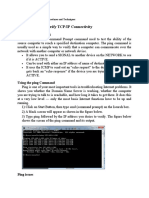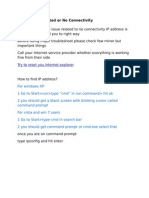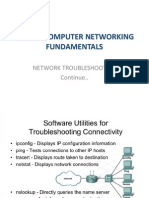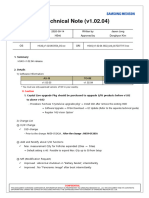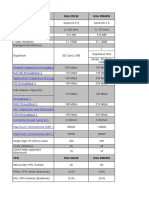0% found this document useful (0 votes)
16 views4 pagesBasic Network Troubleshooting Steps
This document outlines basic steps for troubleshooting internet connectivity issues, starting with checking hardware connections and ensuring devices are powered on. It emphasizes the importance of verifying the IP address and WiFi credentials, particularly for wireless users. If these steps do not resolve the issue, it advises contacting the internet service provider for further assistance.
Uploaded by
judykipkebutCopyright
© © All Rights Reserved
We take content rights seriously. If you suspect this is your content, claim it here.
Available Formats
Download as DOCX, PDF, TXT or read online on Scribd
0% found this document useful (0 votes)
16 views4 pagesBasic Network Troubleshooting Steps
This document outlines basic steps for troubleshooting internet connectivity issues, starting with checking hardware connections and ensuring devices are powered on. It emphasizes the importance of verifying the IP address and WiFi credentials, particularly for wireless users. If these steps do not resolve the issue, it advises contacting the internet service provider for further assistance.
Uploaded by
judykipkebutCopyright
© © All Rights Reserved
We take content rights seriously. If you suspect this is your content, claim it here.
Available Formats
Download as DOCX, PDF, TXT or read online on Scribd
/ 4






